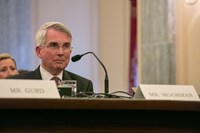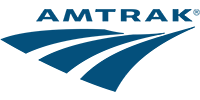
In a hearing before the Senate Subcommittee on Surface Transportation and Merchant Marine Infrastructure, Safety, and Security, Amtrak President and CEO Wick Moorman called for a new era of investment in Amtrak’s infrastructure, fleet, and stations, which are critical to the operations and future growth of passenger rail.
“The time is now to invest in our aging assets,” Moorman testified. “More than ever, our nation and the traveling public rely on Amtrak for mobility, but the future of Amtrak depends on whether we can renew the cars, locomotives, bridges, tunnels, stations and other infrastructure that allows us to meet these growing demands.”
Moorman noted that in fiscal year 2016 Amtrak had record ridership of more than 31 million passengers and ticket revenues of $2.2 billion. “I’m certain that we can get even better by relentlessly improving our safety culture, modernizing and upgrading our products and strengthening our operational efficiency and project delivery.” Moorman stressed that Amtrak’s job is to deliver the services and run the network that Congress and the Administration – the principal stakeholders – believe is worth the investment.
To do so, Amtrak needs additional support from Congress and the Administration. After 45 years of service, many of Amtrak’s assets are at the end of their useful life. For example, Amtrak’s Northeast Corridor, with 363 miles of Amtrak-owned infrastructure, is North America’s busiest railroad with 2,200 daily high-speed, commuter and freight trains, but was largely built over 100 years ago.
Noting that Amtrak’s list of investment needs is long, but provides considerable benefits to the traveling public and the national economy, Moorman outlined projects that warrant significant investment including:
- Construction of the Portal North Bridge and new Hudson Tunnels, both parts of the larger Gateway Program that will ensure that 450 daily Amtrak and NJ Transit trains can continue to serve New York City from the south;
- Construction of new B&P Tunnel and Susquehanna Bridge in Maryland to expand service and improve trip-time;
- Expansion and improvement of Chicago and Washington Union Stations to improve accessibility, expand capacity, spur local development and enhance safety;
- Construction of fleet of new or rebuilt diesel locomotives to support Amtrak’s National Network; and
- Construction of track, signaling, and other improvements to remove chokepoints on our host railroads or restore service in key underserved markets, like along the Gulf Coast.
Additionally, Moorman emphasized the importance of the 21 states and various commuter agencies that Amtrak partners with to provide service on corridors across the country and on the Northeast Corridor. He noted that Amtrak is focused on identifying ways to work even more collaboratively with these states and agencies on the long list of important rolling stock, infrastructure, and funding needs.
Moorman urged Congress and the Administration to consider the many ways in which the Federal government can advance intercity passenger rail service through direct investments, public-private partnerships and innovative financing, streamlining of the environmental review process and removal of red tape.
Moorman added that such rail infrastructure investments not only help Amtrak better serve passengers, but also stimulate job growth in construction, manufacturing, and professional services. Rail cars, locomotives, steel, concrete, machinery, signals and track are sourced from across the nation. “Investments in these sectors can help spur the rebirth of America’s passenger rail manufacturing and supply sector,” he concluded.
About Amtrak®
Amtrak – America’s Railroad® – is dedicated to safe and reliable mobility as the nation’s intercity passenger rail service provider and its high-speed rail operator. With our state and commuter partners, we move people, the economy and the nation forward, carrying more than 30 million Amtrak passengers for each of the past six years. Formally known as the National Railroad Passenger Corporation, Amtrak is governed by a 10-member board of directors, nine of whom are appointed by the President of the United States plus the Amtrak CEO. Anthony R. Coscia is board chairman and Jeffrey R. Moreland is vice chairman. Amtrak operates more than 300 trains daily – at speeds up to 150 mph (241 kph) – connecting more than 500 destinations in 46 states, the District of Columbia and three Canadian Provinces. Learn more at Amtrak.com or call 800-USA-RAIL for schedules, fares and other information.




Comments
There are no comments yet for this item
Join the discussion